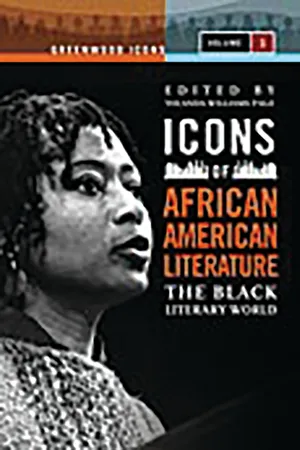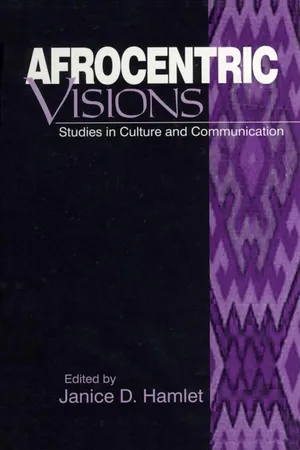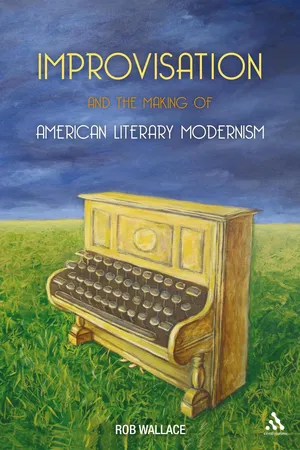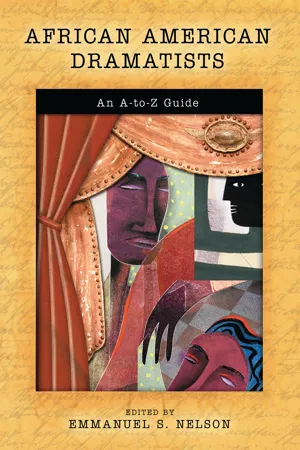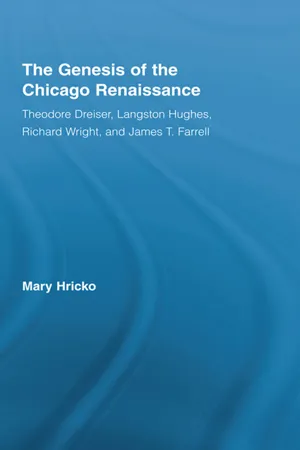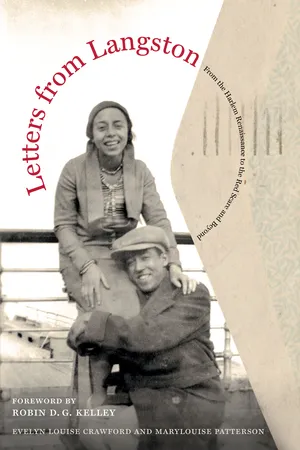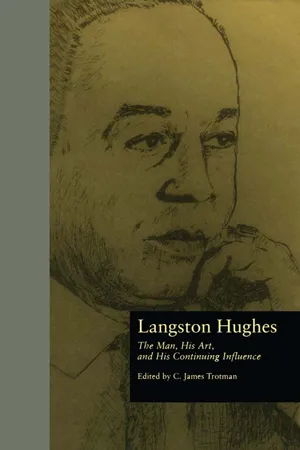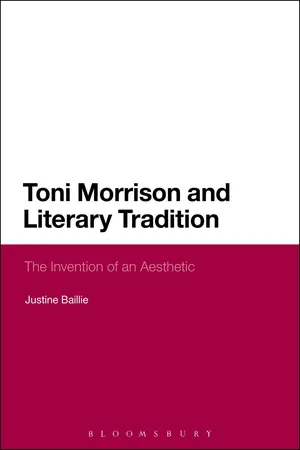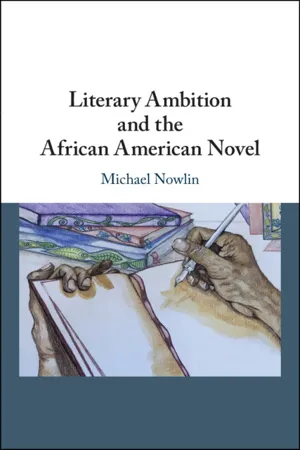History
Langston Hughes
Langston Hughes was a prominent figure of the Harlem Renaissance, a cultural movement that took place in the 1920s and 1930s. He was a poet, novelist, and playwright known for his insightful portrayals of African American life and culture. Hughes' work often addressed issues of identity, discrimination, and the pursuit of the American Dream, making him a significant voice in American literature.
Written by Perlego with AI-assistance
Related key terms
1 of 5
12 Key excerpts on "Langston Hughes"
- eBook - PDF
Icons of African American Literature
The Black Literary World
- Yolanda Williams Page(Author)
- 2011(Publication Date)
- Greenwood(Publisher)
Langston Hughes For more than five decades, Langston Hughes wrote poetry, fiction, and plays that were meant to capture the essence of the black experience in America. A prolific writer of rare versatility, he wrote for the men and women he saw struggling first for survival and then for equality from the 1920s through the 1960s. (Library of Congress) 140 Icons of African American Literature Poet laureate, dean of black American writers, a self-proclaimed literary share- cropper, and radical socialist were terms used to describe Langston Hughes (1902–1967) at some point during his literary career. All apply to the man, and in subtle ways, they underscore the vision he had for his corpus. More than an American poet, Hughes successfully wrote and published short stories, nov- els, two autobiographies, children’s books, critical essays, and editorials. He also translated the works of Jacques Romain, Nicolas Guillén, Leon Damas, Gabriela Mistral, and Jean-Joseph Rabearivelo (Miller 114). He collaborated with musical composers, working as a lyricist and writer of librettos; and as a dramatist, he designed plays that were performed on Broadway and in smaller venues—the Karamu House in Cleveland, Ohio, and New York’s Harlem Suit- case Theatre. In addition, Hughes also edited definitive collections that helped lay early foundations for appreciating the African American literary canon. He partnered with his best friend Arna Bontemps to publish The Poetry of the Negro, 1746–1949 (1949) and The Book of Negro Folklore (1958). Indepen- dently, he compiled anthologies such as Poems from Black Africa (1963), New Negro Poets: U.S.A. (1964), The Book of Negro Humor (1966), and The Best Short Stories by Negro Writers (1967). - eBook - PDF
Afrocentric Visions
Studies in Culture and Communication
- Janice D. Hamlet, Janice Hamlet(Authors)
- 1998(Publication Date)
- SAGE Publications, Inc(Publisher)
And by the time of his death, Langston Hughes had become accepted all over the world as one of the truly gifted poets of our time. Notes 1. The University of Jos, Nigeria, has regularly offered courses in American and African-American literatures since 1978 when this author first introduced them into the English department’s curricula. 2. Aspects of their significant works appear in Black Voices (Chapman, 1968) and other anthologies. 3. Quoted in Harlem Renaissance (Huggins, 1973: 38). 4. This and subsequent quotes have been taken from Afro-American Writing (Long, 1972: 214-215). 5. See “Harlem: The Cultural Capital” in The New Negro (Locke, 1925: 301-311). References Asante, M. K. (1987) The Afrocentric Idea. Philadelphia: Temple Univ. Press. Bell, R. A. I? and B. J. Parker [eds.] (1979) Sturdy Black Bridges. Garden City, m: Anchor/ Doubleday. Chapman, A. (1968) Black Voices. New York: Mentor. DuBois, R? E. B. (1903) The Souls of Black Folk: Essays and Sketches. Chicago: McClurg. Dunbar, I? L. (1913) The Complete Poems of Paul Lawrence Dunbar. NewYork: Dodd, Mead. Frazier, E. F. (1957) The Negro in the United States. New York. Hughes, L. (1963) The Big Sea. New York: Alfred A. Knopf. Huggins, N. I. (1976) Harlem Renaissance. New York: Oxford Univ. Press. Johnson, J. X! (1917) Fifty Years and Other Poems. Boston: Cornhill. Johnson, J. X! (1931) “Preface,” in J. X! Johnson (ed.) Book of American Negro Poetry. New York: Harcourt, Brace. Locke, A. (1925) The New Negro: An Interpretation. New York: Alfred & Charles Boni. Long, R. A. (1972) Afro-American Writing: An Anthology of Prose and Poems, Vols. 1-2. New York: New York Univ. Press. O’Daniel, T. [ed.] (1971) Langston Hughes, Black Genius: A Critical Evaluation. New York: Modern Language Association of America. Rexroth, K. (1971). American Poetry in the Twentieth Century. New York: Herder & Herder. Turner, D. (1969) Black American Literature: Essays. - Rob Wallace(Author)
- 2010(Publication Date)
- Continuum(Publisher)
2 Additionally, while Hughes’s reputation and influence cannot be denied, too often it seems that outside of Hughes scholarship the full scope of his career is underestimated and unknown. The standard view of Hughes seems to be that he was an important poet of the Harlem Renaissance; again an undeni-able fact, but also an incomplete picture of the ways in which his work spanned the early to mid-twentieth century, and how he worked in so many different settings. Harold Bloom’s quip that Arnold Rampersad’s biography of the poet is more interesting than Hughes’s work itself is indicative of this attitude. 3 One reason for the continuing lack of attention paid to complexities of figures like Hughes is, I believe, a long-standing discomfort with the improvi-sational aspects of modernism. This is a typical gap particularly in scholarship about musico-literary connections, and sometimes I believe it reflects not so much unwitting racist or classist attitudes toward non-“classical” styles but a rather an ignorance of the actual performance practices and histories of those styles (which we could attribute to a structural racism within English literary scholarship at large). 4 Thus the Harlem Renaissance becomes an important period, but only for black poets, and jazz becomes important, but only as a source for enlivening Langston Hughes: Impossible Dance 69 Western art classical music. The actual histories are more complex. As Baraka asserts, “[Hughes] talks enough about the white literary world so that we are at least reminded that what is called “Anglo-American modernism” and the Harlem Renaissance are, in fact, contemporaneous.” 5 Hughes himself ques-tions the legacy of the “so-called Negro Renaissance” in The Big Sea : “The ordinary Negroes hadn’t heard of the Negro Renaissance.- eBook - PDF
- Paul Devlin(Author)
- 2021(Publication Date)
- Cambridge University Press(Publisher)
part iii Literary and Critical Contexts chapter 20 The Harlem Renaissance Michael Borshuk In July 1936, arriving in New York to look for summer work, Tuskegee undergraduate Ralph Ellison encountered the poet Langston Hughes and the philosopher Alain Locke in the lobby of the 135th Street YMCA where he was staying. As a young man in Oklahoma, Ellison had read Hughes’s work, admiring one poem, “Youth,” enough to copy it into a notebook (Rampersad, 43). Later, Ellison was introduced to Locke in a Tuskegee campus visit. Encountering these key figures of the Harlem Renaissance now, the intrepid Ellison approached and introduced himself. His fast friendship with Hughes proved a significant influence on Ellison as a writer – from a loaned typewriter, to gifted books, to the literary introductions Hughes offered, including, most significantly, to novelist Richard Wright. Ultimately, the fortuitous YMCA meeting steered Ellison away musical training and toward his eventual ascension in American literature. As Adam Bradley suggests, “From the distance of history, the meeting seems freighted with significance: the past, present, and future of African American literature in the very birthplace of twentieth-century black art.” 1 Indeed, this firsthand contact with figures directly and indirectly (in the case of Wright) associated with the Harlem Renaissance of the 1920s and 1930s, invites a fairly easy genealogical frame for understanding Ellison’s work. Locke was an architect of the New Negro literary phenomenon, giving name to a whole generation of black artists in his influential essay and edited volume of the mid-1920s. Hughes was the movement’s pre- sumed poet laureate, a precocious success from his first published poem, “The Negro Speaks of Rivers,” through countless awards and well-received books. - eBook - PDF
African American Dramatists
An A-to-Z Guide
- Emmanuel S. Nelson(Author)
- 2004(Publication Date)
- Greenwood(Publisher)
Langston Hughes Schwarz has shown in her study Gay Voices of the Harlem Renaissance that Hughes "produces a multiplicity of meanings, works with an ambiguity of terms, and employs textual strategies, thereby opening up spaces also for gay readings" (72). Schwarz stresses that Hughes's "literary gay voice appears to have changed over the years" (87): while Hughes "construct[ed] a framework for same-sex experiences" (83) through his Whitmanesque depictions of sailors and life on the sea in his early works, he introduced stereotypical depictions of butch lesbians and effeminate gay men in his later plays, perhaps for commer- cial reasons. Some of Hughes's works have been included in gay anthologies. "Blessed Assurance" was included in Black Like Us: A Century of Lesbian, Gay, and Bisexual African American Fiction (2002) and four of Hughes's poems were reprinted in Gay and Ixsbian Poetry in Our Time (1988). It is likely and desir- able that future studies will dismantle Hughes's closet even further so that he "will take his place in literary history not just as a race and folk poet, but as one whose complex achievement includes battling oppression through his veiled homosexual expressivity. Then we will see that Hughes was not silent about his gayness after all" (Reimonenq 375). He was born James Mercer Langston Hughes in Joplin, Missouri, on February 1, 1902, to James Nathaniel Hughes and Carrie Mercer Langston Hughes. The couple's first son had died two years earlier as an infant and the unnamed child had been buried in a pauper's grave. Soon after Langston's birth, his father left the family and moved to Mexico City, where he worked for the Pullman Company and later the Sultepec Electric Light and Power Company. His departure forced his wife into an unsettled and restless life; she moved from city to city in search of employment, leaving Langston mostly with her septuagenarian mother Mary Langston in Lawrence, Kansas. - eBook - ePub
The Genesis of the Chicago Renaissance
Theodore Dreiser, Langston Hughes, Richard Wright, and James T. Farrell
- Mary Hricko(Author)
- 2013(Publication Date)
- Routledge(Publisher)
Saturday Review , Hughes explained why he thought he had been considered this type of writer: “I have often been termed a propaganda or protest writer. That designation has probably grown out of the fact that I write about what I know best and being a Negro in this country is tied up with difficulties that cause me to protest” (Hughes, Gibson Interview 63). Although Hughes saw the merit in writing that reflected a social political consciousness, he still believed that politics and literature did not always correlate:I did not believe political directives could be successfully applied to creative writing. They might well apply to the preparation of tracts and pamphlets but not to poetry and fiction—which to be valid, I felt had to express so truthfully as possible the individual emotion and reactions of the writer rather than the mass directives issued to achieve practical and often temporary objectives. (Hughes, I Wonder as I Wander 122)Unfortunately, Langston Hughes's social-political writings have often been considered an aberration in his literary career. Historically, critics reviewing these works declare little value, if any, to the inclusion of the works in Hughes's canon. Even now, despite re-examination of the merit of these writings within their context, there are still many scholars who disregard these works in lieu of Hughes's more politically correct pieces. One reason some critics ignore Langston Hughes's radical material is that Hughes, himself often repudiated these writings as past mistake and on several occasions fervently denied supporting any radical ideologies. Yet, if we examine the historical context in which Hughes's denials were made as well as his development as a writer, we can see that Hughes was often forced to make literary concessions that contradicted his true beliefs. To be considered a black radical in a white dominated conservative society would not have been profi table for an African American writer who lived entirely on his professional earnings from his literary activities. Throughout his career, Hughes did what he could to disassociate himself from radicals when such relationships threatened his financial security. It was a situation he had often regretted, but he had come too far to forfeit his literary reputation. Yet, despite Hughes’ reluctance to pledge allegiance to any radical organization, he still felt an obligation to support Leftist movements that were organized to promote important social causes. In a 1960 interview, Hughes explained that he had “believed in the entire philosophies of the Left at one period in [his] life, including Socialism, Communism, and Trotskyism—[for] all isms have influenced [him] in one way or another,” but for the most part, he basically considered himself “apolitical” (Richard Gibson 16). It was this attitude that often put Hughes in conflict with Wright. Some literary critics believe that Hughes was wary of Wright's more radical ideals and often challenged the younger writer's embrace of such ideology. - Jonathan O. Wipplinger(Author)
- 2017(Publication Date)
- University of Michigan Press(Publisher)
165 Chapter 6 Singing the Harlem Renaissance: Langston Hughes, Translation, and Diasporic Blues The mood of the Blues is almost always despondency, but when they are sung, people laugh. —Langston Hughes (1927) In June 1932, “loaded down with bags, baggage, books, a typewriter, a victrola, and a big box of Louis Armstrong, Bessie Smith, Duke Ellington and Ethel Waters records,” the African American modernist poet, jazz and blues fan Langston Hughes embarked from New York on a trip that eventually took him across the Soviet Union, Central Asia, and, for one, maybe two nights, to Ber-lin, Germany. 1 Already widely recognized as one of the most important poets of the New Negro modernist movement also known as the Harlem Renais-sance, Hughes set sail with a small group to film “Black and White,” a Soviet- financed depiction of racism in the United States. On this journey, Berlin and with it Weimar Germany were but temporary stops and his first experience of the German capital was not a particularly positive one. About this “wretched city,” he later commented: “The pathos and poverty of Berlin’s low-priced mar-ket in bodies depressed me. As a seaman I had been in many ports and had spent a year in Paris working on Rue Pigalle, but I had not seen anywhere people so desperate as these walkers of the night streets in Berlin.” 2 Yet it was also in Berlin that Hughes came to experience the African American presence in Germany. At the Haus Vaterland ’s Turkish café, Hughes observed a Black waiter pouring coffee, whom he describes as a “Blackamoor in baggy velvet trousers, gold embroidered jacket and a red fez.” 3 Assuming him to be African, none in his group attempted to speak to this foreigner in a foreign land, but when the waiter heard the group speaking English, he burst out: “‘I’m sure- eBook - PDF
Gay Rebel of the Harlem Renaissance
Selections from the Work of Richard Bruce Nugent
- Richard Bruce Nugent, Thomas H. Wirth(Authors)
- 2002(Publication Date)
- Duke University Press Books(Publisher)
I offer this book not as a definitive analysis but as an invitation to wider appre-ciation and further study of his life and work. I When nineteen-year-old Richard Bruce Nugent returned with Langston Hughes to New York City from his native Washington, D.C., in August 1925, the Harlem Renaissance was in full swing. Three years earlier, after a decade in which major commercial publishers had issued almost no books by African Americans, Harcourt Brace had published both James Weldon Johnson’s semi-nal anthology, The Book of American Negro Poetry, and Claude McKay’s Harlem Shadows. In 1923 Jean Toomer’s avant-garde Cane had astounded readers both black and white. NAACP staff members Walter White and Jessie Fauset had each published a first novel shortly thereafter. Howard University professor Alain Locke had edited the groundbreaking March 1925 issue of Survey Graphic entitled ‘‘Harlem: Mecca of the New Negro’’—an issue so spectacularly success-ful that it was being expanded into a book-length anthology, The New Negro. Countee Cullen’s first book of poems, Color, was in press. Four of Hughes’s own poems appeared in the September issue of America’s most stylish maga-zine— Vanity Fair —which had just hit the newsstands. The house organs of two major civil-rights organizations—the naacp’s Crisis and the Urban League’s Opportunity —regularly featured the work of African American writers and artists as part of a strategy to advance the cause of social and political equality by trying to gain the attention and respect of the white elite and the empathy of white readers. Both organizations sponsored contests and awards banquets as a means of stimulating new talent and bringing it to the attention of those eminent white literati who could be persuaded to serve as judges. Hughes and Nugent were going to New York to attend one of these events—the naacp -sponsored Krigwa Awards ceremony. Nugent was not the only talent drawn to Harlem in the second half of 1925. - eBook - PDF
Letters from Langston
From the Harlem Renaissance to the Red Scare and Beyond
- Langston Hughes, Evelyn Louise Crawford, MaryLouise Patterson, Evelyn Louise Crawford, MaryLouise Patterson(Authors)
- 2016(Publication Date)
- University of California Press(Publisher)
Langston and Louise’s friendship deepened as well. Meanwhile, Langston returned to school, enrolling in Lincoln University, a historically black college located in Chester, Pennsylvania. Upon gradua-tion in 1929, he settled more or less permanently in New York City. By that time, Harlem had been deemed by some to be the capital of the Black world, where Black artists, intellectuals, and entrepreneurs thrived, Black police offi cers walked the beat, and Black dreams did not need to be deferred. For the generation of Langston and our parents, this “Negro Mecca” offered hope for a new beginning in an age of scientific racism barely sixty years removed from slavery. It promised the flowering of a Black intelligentsia and culture, a symbol of what sophisticated, urbane Black people could become if they held power and were left alone. As the poet and critic James Weldon Johnson explained, “[T]he Negro’s situation in Harlem is without precedent in all his history in New York; never before has he been so securely anchored, never before has he owned the land, never before has he had so well-established a community life.” 7 The Harlem Renaissance was in full swing. 6. See Arnold Rampersad, The Life of Langston Hughes, vol. 1, 1902 – 1941 (New York: Oxford University Press, 1986), 130–131. 7. James Weldon Johnson, Black Manhattan (New York: Arno Press, 1968), 158–159. I n t roduct ion • 7 And yet, just three decades before, no one would have predicted that the choice block of land from 110th to 145th Streets would become a predomi-nantly Black community, let alone the epicenter of the African diaspora in the United States. By the turn of the twentieth century, rising land values, boosted by the extension of the IRT subway line, lured Manhattan’s bour-geoisie and real estate speculators to Harlem. They erected beautiful brown-stones, luxury apartment buildings, and a few small mansions. - eBook - ePub
Langston Hughes
The Man, His Art, and His Continuing Influence
- C. James Trotman(Author)
- 2014(Publication Date)
- Routledge(Publisher)
The Langston Hughes Society was founded in 1981 and lists hundreds of members. The Langston Hughes Review remains in publication ten years after its founding. These many bits of evidence reveal that writing seriously about African American people proved successful for Hughes. Moreover, Hughes's success has taught subsequent generations of writers valuable lessons about universality. While we once associated broad human values which were not limited to one place or to one period of time only to such classics as Shakespeare's Romeo and Juliet or Jane Austen's Pride and Prejudice, we can now trace both critical and popular appraisals of the Simple tales and find the same praise being offered to Langston Hughes's portrayal of this Everyman from Harlem. By reviewing the kinds of authorial, aesthetic, and critical decisions which led to Hughes's creation of Simple, contemporary readers can see how similar declarations and choices have arisen from other critics and African American writers. Furthermore, readers can note the scholarly and popular evidence that Simple has indeed remained vibrant and believable beyond both his era and his geographical and political boundaries. First of all, while Langston Hughes had already become firmly established as a writer by 1943 when he introduced the Simple episodes as occasional features in his weekly column in the Chicago Defender, that venue provided Hughes's first regular access to an almost entirely African American audience, not of the priviledged and elite but of average people. Thus, while Hughes had needed to consider the broader American reading public with his short stories for the Saturday Evening Post or for his earlier collections of short stories such as The Ways of White Folks, by 1942 when he began his “Here to Yonder” column in the Defender, he could address a black audience every week. He could use the language—even the slang—of the black readers of the Negro press - eBook - PDF
Toni Morrison and Literary Tradition
The Invention of an Aesthetic
- Justine Baillie(Author)
- 2013(Publication Date)
- Bloomsbury Academic(Publisher)
1 Historical and Literary Context: The Harlem Renaissance This chapter establishes a historical, literary and intellectual context within which Morrison’s aesthetic can be situated, beginning with W.E.B. Du Bois’s efforts to forge political gain from the affirmation of black cultural and intellectual endeavour in the early years of the twentieth century. I trace his, and Alain Locke’s, influence on the Harlem Renaissance and its ambivalent relationship with early twentieth-century primitivist modernism, as Locke attempted to direct the new movement from a racist minstrel tradition. The tensions between Du Bois and Locke’s efforts to orchestrate a ‘New Negro’ identity and the desire of younger writers such as Langston Hughes and Zora Neale Hurston to express a lower-class African-American sensibility are also considered here. I end with a discussion of the Harlem writers’ relationship with a folk discourse which, in the formulations of Du Bois and Locke, was shaped by the desire to provide African-American art and literature with a political and national cohesiveness but was employed more problematically by Hurston and Hughes to establish an authentic racial identity. These early debates are important for a consideration of Morrison’s aesthetic as her project for the recovery and transformation of language extends the efforts of the Harlem writers to use language in ways that counteract its power to limit and define. Building upon the Harlem writers’ concern with minstrelsy and primitivist preconceptions, Morrison extends the critique of dominant modes of language to include ideologies of education, beauty and twentieth-century cultural hegemony. As a leading intellectual, academic and literary figure, Morrison, like Du Bois before her, bears a pedagogical responsibility. In effect, the political intent of Morrison’s project extends Du Bois’s privileging of an African-American epistemology and her work dramatizes group and individual - Michael Nowlin(Author)
- 2019(Publication Date)
- Cambridge University Press(Publisher)
The year 1926 witnessed a series of literary events that suggested not merely how aesthetically conservative most New Negro literature was, but the extent to which the Renaissance was still largely about overcoming literary destitution, another nagging symptom of which was a sense among writers and critics of temporarily benefiting from a publishing vogue and lower critical standards. This was the year of the Crisis symposium “The Negro in Art: How Shall He Be Portrayed,” made up largely of advice from prominent white and black writers and activists for improving African American literature. It was the year of the Renaissance’s key polemical essays, which diverged sharply on the nature of this literature: first Schuyler’s “The Negro-Art Hokum” followed by Hughes’ “The Negro Artist and the Racial Mountain,” pub- lished in the June 16th and June 23rd issues of The Nation, then Du Bois’ “Criteria of Negro Art,” published in the October Crisis. And it was the year, finally, of Nigger Heaven, which appeared in August, and in the ensuing controversy found its most brazen champion in the self-styled avant-garde magazine Fire!, appearing in November with Thurman’s name leading the masthead. Despite the bibliographies, critical surveys, and fresh examples of African American writing in The New Negro, these 1926 writings collectively imply that African American “literature” was still mainly on the horizon, that the foundations were still being laid. And within a year of his arrival, Thurman had positioned himself as both the leader of the younger Negro artists of Hughes’ manifesto and the most uncompromising proponent of this view. The Crisis symposium spanned seven issues from May through November 1926, and consisted of answers to a questionnaire mainly about how African Americans should represent themselves in their own literature. Literary representation for the Crisis editors was primarily instrumental and in the service of political representation.
Index pages curate the most relevant extracts from our library of academic textbooks. They’ve been created using an in-house natural language model (NLM), each adding context and meaning to key research topics.
